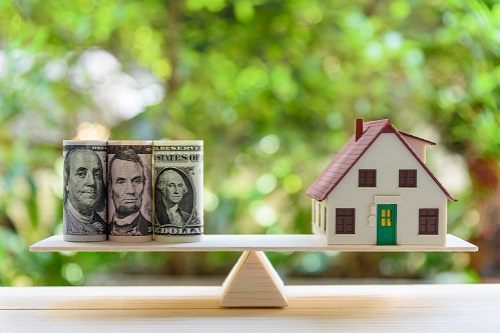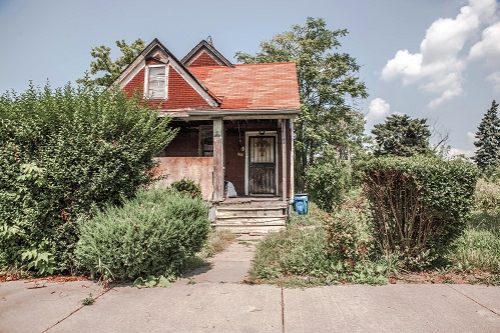- How is home insurance calculated?
- What information is needed for a home insurance quote?
- What is the formula for calculating homeowners insurance?
- How are homeowners insurance rates determined?
- How much is homeowners insurance?
- How much should homeowners insurance increase each year?
- How to lower homeowners insurance
- What is a home insurance premium?
- FAQ: Calculating home insurance
How is home insurance calculated?
Home insurance calculations are complex and involve several steps. Insurance companies start with a basic calculation of what's known as pure premiums, which are then adjusted based on the company's operating costs, or expense ratio. That results in the gross premium. That's the base premium in a specific area without taking into consideration anything specific about the home or the homeowner.
Those specific factors can have a big impact on the number that finally appears on your bill. They include all of the details of the home (construction type, square footage, materials, features and age) and details about you and your household(credit and claims history, pets, smoking and more.)
Here's a breakdown of how those steps work to calculate your final premium.
1. Calculating the pure premium
If an insurer wants to set its premium for a group of homeowners, it first divides the losses associated with that group by its exposure. If, during the previous year, the losses for properties valued at $100 million totaled $500,000, that result would be 5% or five cents per dollar of property value, just to cover losses (what is paid out in claims.) This figure is called a "pure premium."
2. Calculating the expense ratio
Next, the insurer determines its administrative and other costs, like commissions paid to agents, maintaining office buildings, paying support staff and even taxes. It then builds in its desired profit to set how much the company needs to make after paying all of the costs associated with doing business. That is usually expressed as a percentage called the "expense ratio." 26.5% is the industry average, according to S&P Global.
3. Setting the base premium
Insurance companies use a calculation of the pure premium and the expense ratio to get the gross premium. That's sort of a base rate for home insurance in your area.
4. Adjusting for the home and homeowner
Starting with the base premium, the insurance company will adjust the rate based on a wide variety of factors. First, the home itself is considered, with a detailed calculation of its replacement cost based on age, construction type and materials used inside and out, the square footage of the home and any decks or porches and details of features like fireplaces. Then, the homeowner and household are considered, looking at past claims, credit, pets in the home and even whether anyone in the home smokes. Increases in rates due to risks are referred to as surcharges.
5. Finalizing the premium with discounts
With the adjusted premium in hand, the insurance company will finalize the rate by subtracting any discounts for which you qualify. Some of these will be based on details learned during the previous step, like discounts for hail-resistant roofing. Others, like bundling discounts, are applied in the final step.
Home insurance calculator by ZIP code
Average home insurance rates in TexasMost & least expensive ZIP codes for homeowners insurance in Texas
| ZIP code | City | Highest rate |
|---|---|---|
| 77550 | Galveston | $10,164 |
| 77586 | El Lago | $9,906 |
| 77551 | Galveston | $9,536 |
| 77554 | Galveston | $9,358 |
| ZIP code | City | Lowest rate |
|---|---|---|
| 78559 | Iglesia Antigua | $1,956 |
| 78593 | Santa Rosa | $1,999 |
| 79915 | El Paso | $2,008 |
| 79905 | El Paso | $2,009 |
What information is needed for a home insurance quote?
To get the most accurate homeowners insurance quote possible, it helps to have as much detail as possible about the home. Use this homeowners insurance checklist when gathering information for your quote:
- The address of the home
- The year it was built
- Construction type
- Roof and siding materials
- Square footage
- Number of bedrooms and bathrooms
- Interior materials such as flooring type and counters
- Who lives in the home
- Any pets in the home, particularly dogs
- Any special features about the home, like fireplaces, stained glass windows, jetted tubs or vaulted ceilings
What is the formula for calculating homeowners insurance?
Based on the steps above, a simplified version of the formula for calculating home insurance premiums would look like this:
Base rate for your home based on replacement cost and selected coverages + surcharges - discounts = your final premium.
To create a home insurance estimate yourself, you can get a loose number using your home's replacement cost and a home insurance calculator. Multiplying the home's square footage by the cost to rebuild is a quick way to determine replacement cost, which is the dwelling coverage for your home. For example, let's assume your home is 2,000 square feet and the average cost to build per square foot is $150 (this cost will vary depending on your location, home type, etc.) So, 2,000 X $150 = $300,000 dwelling coverage.
Since we recommend insuring 100% of your rebuild cost, plug that dwelling coverage number into our home insurance calculator along with your ZIP code, liability coverage amount and chosen deductible.
How are homeowners insurance rates determined?
David Meltzer of East Insurance Group in Baltimore, Maryland, says underwriting software generates the rate. "We're able to advocate for the insured when there's a claim, but the days of agents setting rates for clients have long passed."
Furthermore, insurance pricing is very fluid and changes continuously.
"The thing is, insurance carriers are aggressively trying to take business from other carriers and are willing to cut prices to get the business," Meltzer says. "They keep their algorithms top secret.”
The way insurers weigh these factors when setting rates is ever-changing, but here are common factors that determine rates:
- Replacement cost of the home (higher cost = higher rates)
- Age of the home (newer homes can be cheaper to insure)
- Home square footage (larger homes are more expensive to rebuild and have higher premiums)
- Number of primary inhabitants (larger households increase potential liability)
- Construction type (fire-safe materials like masonry are cheaper to insure than wood)
- Roof type (fire-retardant asphalt or metal is preferable to wood shakes)
- PPC (Public Protection Classification, which measures the proximity of fire station, police, hydrants, etc. A "1" is the best; a "10" is the worst.)
- Area claim history (if neighbors file lots of claims, it can increase your rates)
- Personal claim history (if you file more than average claims, your rates will be higher)
- Pets (a dog with a bite history or breeds considered more dangerous can increase rates)
- Owner's credit score (statistics show that people with lower scores file more insurance claims)
- C.L.U.E. report of the property, which lists claims filed by the previous owners in addition to you. If the cause of the claims has not been resolved, your rates will be higher.
- Security or alarm system (alarms and monitoring help decrease rates)
- Fire alarm system
- Deadbolt locks
- Neighborhood crime rate (higher crime areas cause higher insurance rates)
- Attractive nuisances (swimming pools, ponds, machinery, playground equipment, trampolines) increase liability potential and insurance premiums
- Coverage levels, including endorsements
If one or more of the factors listed here is costing you money and can't be changed (like your location), check with other insurers. A different company might not rate your Rottweiler or neighborhood the same way, and you could pay less for your coverage.
How much is homeowners insurance?
Homeowners insurance costs an average of $2,601 a year nationwide for a policy with dwelling coverage and liability limits at $300,000 and a $1,000 deductible.
Of course, coverage level is a major factor. The same policy at $200,000 in dwelling coverage averages $2,233 a year, while it costs an average of $3,595 at $500,000 in dwelling coverage, all other things being equal.
Of course, insurance averages are just an idea of rates. As we have covered here, your exact rate is the result of numerous steps and consideration of a lot of factors.
How much should homeowners insurance increase each year?
There's no set amount for annual increases, as it depends on a lot of factors. Home insurance follows inflation but may not go up exactly in line with overall inflation. That's because the cost of construction materials may rise at a higher rate. Insurance companies will also adjust for claims paid, both claims you have filed and claims filed in your neighborhood that indicate a higher risk.
In addition, any changes you have made to the home will affect your rates. That includes renovations and additions, or even things that increase the risk, like adding a swimming pool.
How to lower homeowners insurance
There are several ways to save money on home insurance. First, try the same methods you'd use to save on auto insurance:
- Ask how much you can lower your premium by raising your deductible. You won't want to make multiple small claims anyway, so paying for coverage you're unlikely to use isn't always the best use for your insurance dollars.
- You might pay less by bundling your coverage with one insurance company.
- Ask about discounts. There aren’t as many discounts for home insurance, but some are pretty big.
Next, look at these tips specific to homeowners insurance.
- Consider making your home safer with a monitored security system (studies show that this can get you a 20% discount on your premium), motion-sensing lights, and upgraded locks, windows and doors.
- Don't insure for your home's purchase price. If the house burned down, you'd be rebuilding your structure and replacing landscaping - but the actual land does not need to be insured. Insure your home for the calculated replacement cost instead.
- Request a Comprehensive Loss Underwriting Exchange (C.L.U.E.) report for your property. If the cause of claims by the previous owner has not been resolved, your own rates could be affected. If it has been resolved, you can have the report corrected, saving you (and subsequent owners) on home insurance premiums. To fix an error, fill out the form on LexisNexis, the company that compiles C.L.U.E. data, or call them at 800-456-6004.
- You should also request your personal C.L.U.E. report, which contains your personal claims history. Review it for errors - like a credit report, it may not be accurate, and fixable mistakes could be costing you.
- Look into umbrella coverage for extra liability protection. It's relatively cheap (usually between $200 and $300 per year), and Meltzer says that some insurers' software is designed to offer lower rates to those with this coverage. "We're told that umbrella policyholders are viewed as more responsible," he says.
- Finally, if you're willing to give up some information to your insurer, it may reward you. Similar to the "black boxes" some drivers install on their cars in exchange for lower car insurance premiums, "smart" home products, including security cameras, thermostats, carbon monoxide, and fire detectors can net you up to 20% off some or all of your homeowners insurance premium.
- Look to home improvements to lower insurance. Updating your roof or adding weather protection like storm shutters can reduce your rates.
What is a home insurance premium?
Your premium is what you pay for coverage, also called your homeowners insurance rate. Home insurance premiums are calculated on an annual basis and reviewed each year. Premiums change annually following the cost of construction and other factors.
FAQ: Calculating home insurance
How much should you spend on homeowners insurance?
What you should expect to spend on homeowners insurance depends on where you live, the types and amounts of coverage you need, and other factors determining insurance rates. The average home insurance rate for $300,000 dwelling coverage and $300,000 liability with a $1,000 deductible is $2,777 annually. Yours may be more, or it may be less.
What is the 80% rule in homeowners insurance?
Also called the 80/20 rule, the 80% rule in home insurance is a standard that most insurance companies will not pay some claims in full if you have not purchased coverage for at least 80% of the replacement cost. We recommend purchasing dwelling coverage equal to 100% of the replacement cost.
Why did my homeowners insurance go up?
Home insurance rates can go up for various reasons, including inflation, changes to the risk in your area or on your property, claims and changes made to your property, like additions or improvements. If you're unclear on why your rate went up, call your insurer.




